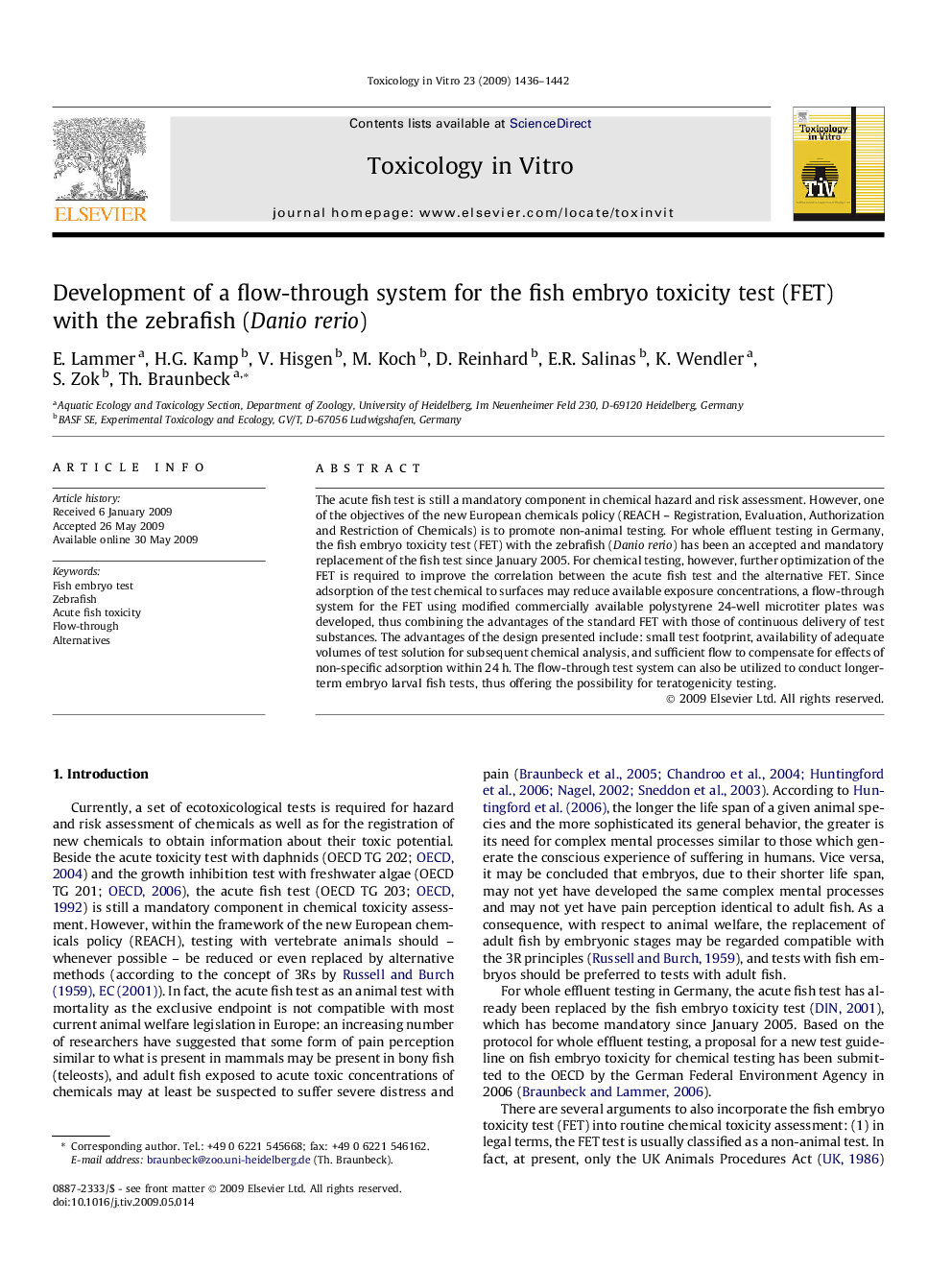| Article ID | Journal | Published Year | Pages | File Type |
|---|---|---|---|---|
| 2602732 | Toxicology in Vitro | 2009 | 7 Pages |
The acute fish test is still a mandatory component in chemical hazard and risk assessment. However, one of the objectives of the new European chemicals policy (REACH – Registration, Evaluation, Authorization and Restriction of Chemicals) is to promote non-animal testing. For whole effluent testing in Germany, the fish embryo toxicity test (FET) with the zebrafish (Danio rerio) has been an accepted and mandatory replacement of the fish test since January 2005. For chemical testing, however, further optimization of the FET is required to improve the correlation between the acute fish test and the alternative FET. Since adsorption of the test chemical to surfaces may reduce available exposure concentrations, a flow-through system for the FET using modified commercially available polystyrene 24-well microtiter plates was developed, thus combining the advantages of the standard FET with those of continuous delivery of test substances. The advantages of the design presented include: small test footprint, availability of adequate volumes of test solution for subsequent chemical analysis, and sufficient flow to compensate for effects of non-specific adsorption within 24 h. The flow-through test system can also be utilized to conduct longer-term embryo larval fish tests, thus offering the possibility for teratogenicity testing.
